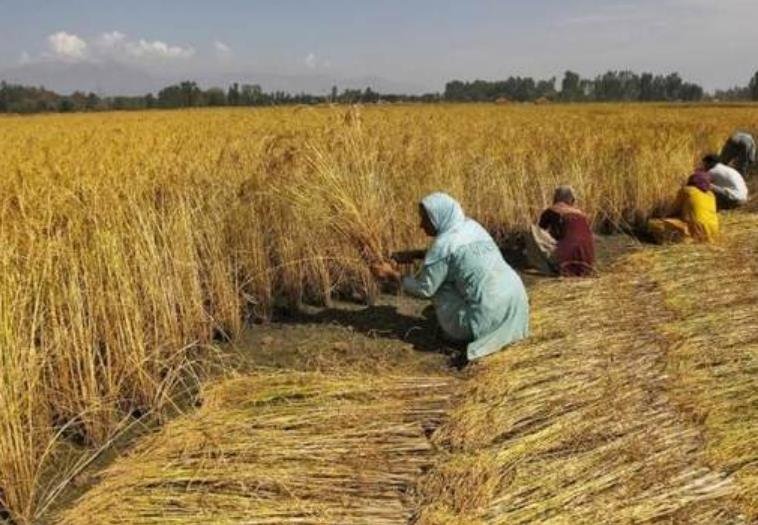Agriculture is one of the biggest sources of greenhouse gas emissions, accounting for about a quarter of the global total. It also faces serious threats from climate change, such as droughts, floods, pests, and diseases. At COP28, the UN climate summit in Dubai, there is a strong focus on how to make the global food system more resilient, sustainable, and low-carbon.
One of the main initiatives launched at COP28 is the Breakthrough Agenda, a set of priority actions for key sectors to decarbonise by 2050. The food and agriculture sector is among them, with a goal to achieve net-zero emissions by mid-century. This means that any remaining emissions from food production and consumption would be balanced by removing an equivalent amount of carbon dioxide from the atmosphere.

The Breakthrough Agenda for food and agriculture outlines four main areas of action:
- Reducing emissions from crop and livestock production, land use change, and food waste. This includes adopting practices such as agroforestry, organic farming, precision agriculture, and circular economy.
- Enhancing carbon sinks by restoring and conserving natural ecosystems, such as forests, wetlands, and grasslands. This also involves increasing soil carbon sequestration through regenerative agriculture and biochar.
- Shifting diets towards more plant-based, healthy, and diverse foods. This requires raising awareness, improving access, and creating incentives for consumers and producers to adopt more sustainable food choices.
- Innovating solutions by developing and scaling up new technologies, products, and business models that can transform the food system. This includes biotechnology, alternative proteins, digital platforms, and climate-smart finance.
The Breakthrough Agenda is supported by countries representing more than 50% of global GDP, as well as businesses, cities, regions, investors, and civil society groups. It aims to create a coalition of actors that can drive systemic change and accelerate the transition to a net-zero food system.
The Global Goal on Adaptation: a framework for resilience
Another key issue discussed at COP28 is how to adapt to the impacts of climate change on food security and nutrition. The Paris Agreement established a Global Goal on Adaptation (GGA), which is a collective vision for enhancing adaptive capacity, strengthening resilience, and reducing vulnerability to climate change. However, the GGA lacks a clear definition, scope, and indicators to measure progress.
At COP28, negotiators are expected to agree on a framework for the GGA, which would provide guidance and support for countries to implement adaptation actions in line with their national circumstances and priorities. The framework would also help to mobilize and align finance, technology, and knowledge for adaptation.
One of the main challenges for adaptation is to ensure that it is inclusive, equitable, and human rights-based. This means that the most vulnerable and marginalized groups, such as smallholder farmers, women, youth, indigenous peoples, and people living in poverty, are empowered and involved in the decision-making and implementation of adaptation actions. It also means that adaptation addresses the root causes of vulnerability, such as poverty, inequality, and discrimination.
The role of youth and civil society: a voice for change
The COP28 summit has also witnessed the active participation and engagement of youth and civil society groups, who have raised their voices and demands for climate justice and action. They have organized protests, marches, rallies, and events to highlight the urgency and importance of tackling the climate crisis and its impacts on food and agriculture.
One of the most notable moments of COP28 was when a 12-year-old Indian activist, Licypriya Kangujam, disrupted a high-level plenary session with a clear message: “End fossil fuels. Save our planet and our future.” She was representing Timor Leste as a special envoy and spoke on behalf of millions of children and youth around the world who are facing the consequences of climate change.
Another remarkable event was the People’s Summit for Climate, Food and Nature, which brought together thousands of representatives from grassroots movements, indigenous communities, farmers’ organizations, women’s groups, and environmental NGOs. They shared their experiences, knowledge, and solutions for transforming the global food system and achieving climate justice.
The youth and civil society groups have also challenged and criticized the COP28 host, the UAE, for its role and influence in the fossil fuel industry. They have called for more transparency, accountability, and ambition from the UAE and other major emitters to phase out fossil fuels and shift to renewable energy sources.
The outcome and the way forward: a chance for change
As COP28 wraps up, the world is waiting for the final outcome and the commitments made by the governments and other stakeholders. The hope is that COP28 will deliver a strong and ambitious agreement that can put the world on a more sustainable path and keep the 1.5°C goal within reach.
However, the outcome of COP28 is not the end of the story. It is only the beginning of a long and challenging journey to transform the global food system and cut emissions from agriculture. It will require sustained and coordinated efforts from all actors and sectors, at all levels and scales, to implement the actions and solutions agreed upon.
The global food system is at a crossroads. It can either continue to be a major driver of climate change and a source of vulnerability, or it can become a force for resilience and a catalyst for change. The choice is ours to make.
